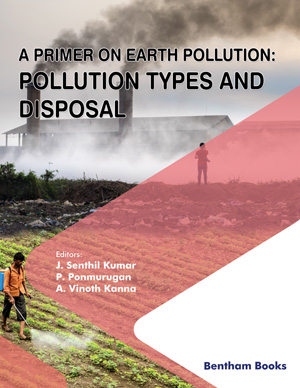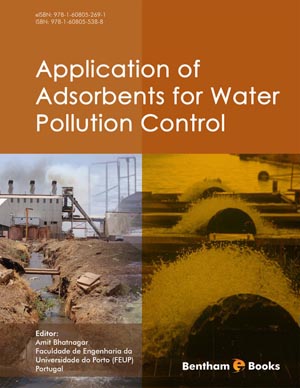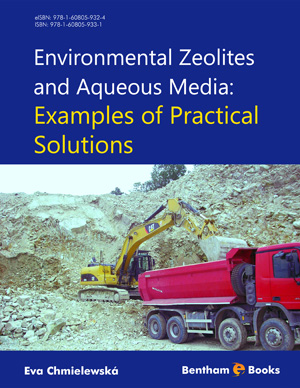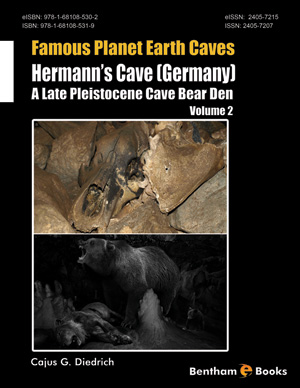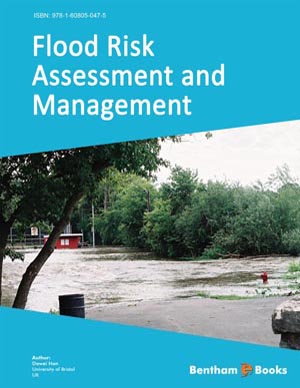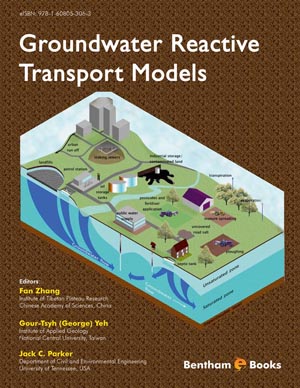List of Contributors
Page: iii-iv (2)
Author: J. Senthil Kumar, P. Ponmurugan and A. Vinoth Kanna
DOI: 10.2174/9789811476556120010002
Synthetic Dyes Pollution
Page: 1-17 (17)
Author: B. Sathya Priya, V. Arun and T. Stalin
DOI: 10.2174/9789811476556120010003
PDF Price: $15
Abstract
Colored products are more attractive and increase the marketing value. Natural and synthetic dyes are used for many centuries for coloring. Synthetic dyes are preferred mostly due to their high stability and cost effectiveness. The food products and textile fabrics which are coloured by synthetic dyes cause severe health issues to human beings. The synthetic dyes are cleaved into aromatic or aryl amines during reductive reactions that cause carcinogenic and mutagenic effects. Children are severely affected due to the consumption of artificial colours in food and may get ADHD (Attention Deficit Hyperactivity Disorder). The European Commission (EU) prohibits the marketing of products that contain the restricted azo dyes which have longer contact with the skin. The synthetic dyes with improper fixing are discharged into the environment along with effluent, causing biomagnification problems. They also affect the terrestrial and aquatic systems and cause severe pollution to the environment. This study deals with the various types of textile and food dyes, their impacts on health and environment and the effective treatment methods for the removal of dyes from the industrial effluent.
Microplastics Pollution
Page: 18-32 (15)
Author: B. Sathya Priya and T. Stalin
DOI: 10.2174/9789811476556120010004
PDF Price: $15
Abstract
The marine ecosystem is highly contaminated by plastic debris, which is the major part of marine debris. Plastics are nondegradable and persistent in the environment for many centuries. The products which we are using in our day to day life have microplastics and the dumping of plastic waste is converted into microplastics by weathering and degradation. The microplastics’ contamination in the ocean and other products is an emerging global concern that has severe impacts on the environment and health problems to the biota. The ingestion of microplastics by the marine biota and the human being's also by consuming seafood and other products leads to severe health disorders. Moreover, the microplastics have a special feature of adsorbing the toxicants in the environment and act as a vehicle for the transfer of those toxicants to which the organisms are exposed. The top predators may be subjected to greater risk due to the ingestion of microplastics. This study deals with the sources of microplastics, their impacts on marine biota and human beings, the management and control measures of microplastic pollution in the environment.
Thermal Pollution
Page: 33-45 (13)
Author: M. Sudha Devi and T. Dhanalakshimi
DOI: 10.2174/9789811476556120010005
PDF Price: $15
Abstract
Pollution is the contamination of the environment by synthetic, semisynthetic or unreal substances or energy that adversely impacts living or non-living matter interfering with health, quality of life or the normal functioning of the ecosystems. To put it in a nutshell, it is the presence of the wrong substance in the wrong place in the wrong quantities at the wrong time. The WordWeb dictionary defines ‘pollutants’ as waste matters that contaminate water, air, or soil. Temperature is a property of a system which determines if they are in thermal equilibrium; temperature plays a vital role in determining the condition in which living things can survive. Thermal pollution can be defined as ‘the warming of the ecosystem due to which the desirable living conditions of organisms are adversely impacted. Studies reveal even a minor change in ambient temperature and oxygen levels can have a profound effect on ecosystems. When an industry/organization consumes water from a natural source, it discharges the water back into natural resources upon heating it up or cooling it down, which subsequently changes the oxygen levels; eventually, it has devastative effects on local ecosystems and populations. It is high time to establish proper conservation and management measures to tide over the crisis of pollution. Upon extensive studies, it has been found that the Three ‘R's - Reduce, Replace, Reuse, can be of great help to tackle pollution. Let us explore and elaborately discuss thermal pollution. Firstly, the classification of pollution, causes, effects and probable solutions for thermal pollution are also discussed .
Agricultural Pollution
Page: 46-58 (13)
Author: K. Chitra and B. Sathya Priya
DOI: 10.2174/9789811476556120010006
PDF Price: $15
Abstract
Agriculture is a combination of science and art, and it is a complex activity. It is the cultivation of plants and livestock. One-third of the world’s workers are dependent on agriculture. But in developed countries, over the centuries, the number of agricultural workers has decreased significantly. In rural areas, agriculture is the largest livelihood provider in India. The by-products of growing and raising livestock, food crops, animal feed and biofuel crops are often considered as contaminants and released into the environment, referred to as agricultural pollution. Many different sources cause agricultural pollution. They are nitrogen-based fertilizers, chemical fertilizers, pesticides, animal manure, industrial effluents, soil erosion and sedimentation, farm animal waste and nutrient runoff. Water and lakes are mainly contaminated by agricultural pollutants. Agricultural pollutants contaminate the soil and water. Chemicals from fertilizers and pesticides first contaminate the groundwater and consequently, drinking water. It contributes to health-related problems in humans. Algal blooms in drinking water and swimming in water streams containing dangerous algal blooms can cause rashes, stomach and liver problems, respiratory infections and neurological effects. A blue baby syndrome is often caused in infants. It is due to high levels of nitrates in drinking water. Agricultural pollution also causes heavy economic losses. We should prevent agricultural pollution through planning and application of fertilizers at the correct time, planting trees and shrubs around the boundaries of farmlands, should avoid over tillage, managing the proper disposal of animal waste and anaerobic digestion of animal waste. We should use bio-fertilizers, organic fertilizers, bio-pesticides and manures to prevent agricultural pollution.
Industrial Effluent Pollution-Impact of Papermill Effluent Irrigation and Solid Waste Application on Cultivated Soil
Page: 59-68 (10)
Author: M. Suguna Devakumari
DOI: 10.2174/9789811476556120010007
PDF Price: $15
Abstract
The paper mills are generating significant quantities of solid wastes and effluent. The scientific ways and means of recycling these solid wastes and effluent in an integrated, eco-friendly manner for agricultural purposes have been the main objective of the present investigation. In brief, in the present investigation, the possible options and potential for agro-cycling of the treated paper mill effluent coupled with the solid byproducts of the industry have been evaluated with special reference to Sugarcane [CO 86032]. The pH and EC of the soil were increased by 0.1 and 0.12 units due to continuous effluent irrigation. The organic carbon content and exchangeable sodium content also increased due to effluent irrigation and solid waste amendments.
Genetically Modified Plants and Its Effect on Environment
Page: 69-79 (11)
Author: J. Beslin Joshi
DOI: 10.2174/9789811476556120010008
PDF Price: $15
Abstract
Population increase, shrinkage of arable land and available resources have led to the development of genetically modified plants for improving food quality and quantity. Cultivation of genetically modified plants has been reported to improve the socio- economic condition of farmers around the globe and their cultivated area has increased constantly. Important food, and feed crops are genetically engineered for improving the nutritional quality, cooking/edible quality, herbicide tolerance, shelf life, pest and disease resistance. Besides several advantages, the impact of genetically modified plants on human health, environment, social and political conditions needs to be addressed. Educating common public towards genetically modified plants and their safe use; framing proper policies and strict regulations towards transgene escape, loss of diversity, non-target effects will empower the society to relish the benefits of genetically modified plants.
Pesticide Pollution
Page: 80-96 (17)
Author: A. Anitha and S. Geethalakshmi
DOI: 10.2174/9789811476556120010009
PDF Price: $15
Abstract
Pesticides are substance or mixture of substance which differ in their physical, chemical and identical properties from one to other. Hence, the pesticides are classified based on these properties. The classification of pesticides is based on (i) mode of entry, (ii) pesticide function and the pest organism they kill, and (iii) on the chemical composition. Pesticides are formulated in various forms like Liquids, Powders, Granules, Baits, Dust, Smoke generators, Ultra Low Volume liquids, etc. They are chemicals that are used to kill or control pests. Despite beneficial results of using pesticides in agriculture and public health sector, their use also invites deleterious environmental and public health effects. It has been observed that inappropriate application of pesticides may adversely affect every component of the environment. Due to the intensive application of pesticides, pests may evolve to develop resistance. Biological controls, such as resistant plant varieties and the tradition of pheromones, have been fruitful and, at periods, eternally resolve a pest problem. The most serious effects involve the destruction of non-target pest organisms (earthworm, pollinator and predators), loss in biological diversity, microbial diversity, and soil biomass or community assembly. These ecological losses owing to pesticides application are economically or socially significant. Hence, pesticides user, especially farmer, is suggested to reduce the impacts of pesticides by minimizing their application or by replacing it with bio-pesticides.
Water Pollution
Page: 97-112 (16)
Author: T. Dhanalakshimi and M. Sudha Devi
DOI: 10.2174/9789811476556120010010
PDF Price: $15
Abstract
Water is indispensable for life, and is indisputably the most priceless natural resource that exists on our planet. Living things on the planet cannot live without water. Though we as humans know this fact, we neglect it by polluting our natural resources like rivers, lakes, oceans, and the water beneath the surface of the earth, groundwater. Consequently, we are harming our planet to the point where organisms are vanishing at a very alarming rate. Most of the organisms die, and our drinking water has been prominently affected, as we use water for amusing purposes. It then affects the climate, resulting in consequences such as drought, changes in weather patterns, etc., which have ultimately increased the demand for freshwater. In order to combat water pollution, we must understand the problems and become part of the solution. The change in the chemical and physical properties of water is called water pollution and thus directly or indirectly harmfully affects the living organisms that consume it and render it unfit for the required uses. The water gets polluted through various sources of the organic and inorganic pollutants of Industry, Agriculture, Domestic, Thermal and Biological wastes. Water pollution is a major global problem thatrequires ongoing evaluation and revision of water resource policy at all levels. It has been suggested that it accounts for the deaths of more than 14,000 people daily. In addition to the acute problems of water pollution in developing countries, developed countries continue to struggle with pollution problems as well. In this paper, the sources of water pollution, effects of water pollution on the ecosystem, ways to control pollution and conservation have been described.
Marine Pollution
Page: 113-128 (16)
Author: B. Sathya Priya, K. Chitra and T. Stalin
DOI: 10.2174/9789811476556120010011
PDF Price: $15
Abstract
Marine resources are very important to human beings as they provide seafood, tourism, trade, sports, and livelihoods. The marine pollutants, such as oil spills, marine debris, heavy metals, plastics, toxic chemicals, noise, nutrients, radioactive waste, sewage, and industrial discharge, severely threaten the marine ecosystem, which includes mangroves, coastal wetlands, and other coastal habitats. The marine pollution disintegrates the significant oceanic and mangrove biodiversity at a faster rate. The population explosion, increased industries, and advanced technology are responsible for releasing more toxicants and man-made debris, which severely affect the flora and fauna in the marine ecosystem. This study deals with the sources, impacts, and control measures of marine pollution.
Multidrug Resistance Proteus mirabilis in Klang River, Malaysia
Page: 129-145 (17)
Author: N. Suryadevara, M. F. T. Lim, G. Shanmugam and P. Ponmurugan
DOI: 10.2174/9789811476556120010012
PDF Price: $15
Abstract
Multidrug-resistance (MDR) bacteria have emerged as a public health threat in the modern era. Extended spectrum β-lactamase has emerged as the most successful resistance mechanism among the Enterobacteriaceae family. ESBLs are often mediated by blaTEM and blaCTX-M genes. The study evaluated the molecular characteristics of ESBL-producing P. mirabilis isolates from the Klang River in order to find the therapeutic options for ESBL infections. There appears to be a high prevalence of CTX-M and TEM genes among P. mirabilis strains in the Klang River. Therefore, rapid identification should be conducted for proper infection control and antibiotic usage. Molecular techniques serve as a useful tool in the understanding of MDR bacteria resistance.
Exploitation of Cryptococcus neoformans Isolated from Cow Dung in Bioremediation of Medical Waste
Page: 146-162 (17)
Author: S. Sumathi, R. Akshaya and R. Padma
DOI: 10.2174/9789811476556120010013
PDF Price: $15
Abstract
Hospital plays a critical role in prevention and treatment of diseases, as well as rehabilitation and improvement of public health. The biomedical waste is the waste that is generated during the diagnosis, treatment or immunization of human beings or animals or in the production or testing of biological components. The application of proper waste management techniques and their identification help improve the understanding of a good waste management practice. A cost-effective environmentfriendly technology is also required. The present study was carried out to find the significance and to recommend the development method of bioremediation using fungal strains isolated from cow dung. Further, the isolated fungal strain was identified by using the 18S r-RNA sequencing method, which helps to identify the species. 18S r- RNA sequencing is one of the techniques that have been used to identify microorganisms. Thus this strain was identified as C. neoformans based on its morphological characteristics and the r-DNA sequencing of its region data, followed by FESEM characterization. The surface texture and morphology of medical wastes like catheter, IV tubes, were analysed. The fungal strains grown in the biomedical waste powder were observed for their ability to grow and absorb the waste. The results showed that Cryptococcus neoformans strongly adheres to the surface of polyethylene powder, indicating the utilization of medical waste. From the results obtained, it was clear that C. neoformans has the ability to degrade medical wastes like catheter and IV tubes. Bioremediation of the medical wastes can reduce pollutants in the soil and atmosphere and cause less harmful effects to the plants and animals.
Biomedical Waste: Safe Disposal and Recycling
Page: 163-179 (17)
Author: V. Arun and B. Sathya Priya
DOI: 10.2174/9789811476556120010014
PDF Price: $15
Abstract
Biomedical waste is generated due to human and research activities related to medical treatments for human health. The various wastes generated include solid, liquid, chemical forms, etc. and are of varied composition like drugs, solvents, body fluids, anatomical parts, food, etc. There is a sharp increase in the production of biomedical waste due to population explosion and other human activities. Hence there is a need to understand biomedical waste in its entirety to provide proper management to handle spillages, accidents, and other issues involving biomedical waste. This chapter explains the definition, types, hazards of biomedical wastes and its current management strategies along with various international treaties and policies regarding biomedical wastes.
Microbial Pollution Control through Biogenically Synthesized Silver Nanoparticles (Bacillus Spp)
Page: 180-190 (11)
Author: J. Senthil Kumar, R. Sathya, P. Balamurugan, R. Gomathi, B. Preetham Kumar and R. Vishnu
DOI: 10.2174/9789811476556120010015
PDF Price: $15
Abstract
Microbes are omnipresent in nature, and have both beneficial and nonbeneficial activities for humans. In the system we live in is getting worse, due to microbes, that obviously end up in pandemic diseases like Covid-19. This chapter made an attempt to control pathogenic microorganisms either in the form of a spray or incorporated in disinfecting agents. Nanotechnology deals with the synthesis, characterization, and manipulation of metals at the nanoscale. The nanoparticles are precisely used due to their smaller size, physical properties, etc. which have shown a change in other materials that are in contact with these tiny particles. They are synthesized through various methods such as physical, chemical, and biological means. This study is aimed at the use of biological, eco-friendly, and green synthetic nanoparticles due to their less time consumption and ease. The visual observation was made with the color change indicated by the synthesized nanoparticles. They were further characterized by UV-Visible Spectrophotometer, XRD, EDAX, Zeta analysis, and FESEM. The size of nanoparticles was about 5.49 ± 2.10 nm. The synthesized nanoparticles showed significant results in control of S. aureus and P. aeruginosa with the zone of inhibition having a size of 16 mm and 18 mm, respectively. The green synthesized nanoparticles were based on the minimal inhibitory concentration and minimal bactericidal concentration.
Subject Index
Page: 191-203 (13)
Author: J. Senthil Kumar, P. Ponmurugan and A. Vinoth Kanna
DOI: 10.2174/9789811476556120010016
Introduction
A Primer on Earth Pollution: Pollution Types and Disposal, is an encyclopedia of important research articles and short essays on pollution. Chapters in the initial half provide information about a wide variety of pollutants (dyes and microplastics) and contributing factors (thermal pollution and the impact of GM plants, for instance). Each chapter explains the nature of polluting agents and presents notes and references on preventive measures. Notes on the associated clinical complications due to exposure are also proved where applicable, such as the case of MDR bacteria in marine environments. The latter chapters of the book cover the biotechnology of medical waste disposal using microbes as well as nanotechnology used for limiting the spread of COVID-19. The volume is a handy reference for students and trainees in the field of environmental science as it brings a balance of basic and applied information on the subject of pollution.


